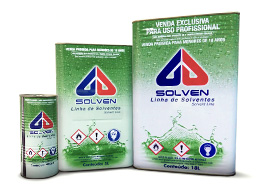
Kerosene Specification and Safety Information
DESCRIPTION
It is a colorless liquid, free of suspended materials. It is mainly composed of aliphatic hydrocarbons. It has low aromatics and sulfur content.
PROPERTIES
See the tests, specification, Solven method and reference method in the PDF file available for download.
APPLICATION / MAIN USES
Used in dry cleaning process, formulation of paints and varnishes, degreaser and other applications tested by the customer.
PACKAGING, STORAGE AND HANDLING
Product considered FLAMMABLE and must be kept away from sources of ignition, in a cool, dry place, protected from the weather. The shelf life of this product is 24 months from the date of manufacture, under the recommended storage and/or packaging conditions. original.
CLASSIFICATION FOR TRANSPORT
UN number: 1223.
Proper shipping name: Kerosene.
Risk class / division: 3.
Risk number: 30.
Subsidiary risk: N.A.
Packing Group: III.
ADOPTED CLASSIFICATION SYSTEM
Standard ABNT-NBR 14725-Part 2: 2009. Adoption of the Globally Harmonized System for the Classification and Labeling of Chemicals, UN.
STORAGE
P402+P403+P404 Store in a dry place. Store in a well-ventilated place. Store in a closed container.
PHYSICAL AND CHEMICAL PROPERTIES
Aspect:
- Physical state: Liquid;
- Appearance: Clear;
- Color: Colorless/Slightly Yellow.
Smell: Characteristic.
Odor threshold: Not available.
pH: Not Applicable.
Melting point/freezing point: Not available.
Initial boiling point and boiling temperature range: Initial Boiling Point: Min. 110.0 °C (ASTM D-86) / End Point Boiling: Max. 270.0°C (ASTM D-86).
Flash Point: > +25 °C Open Vessel (ASTM D-56).
Evaporation rate: Not available.
Flammability: Not Available.
Lower/upper flammability or explosive limits: Upper (LSE): 5.0% – Lower (LIE): 0.7%.
Vapor Pressure: Not Available.
Vapor Density: Not Available.
Relative density: 0.750 (water as standard).
Solubilities: Common organic solvents: Soluble / Water: < 5.
Partition coefficient – n-octanol/water: Not Available
Auto-ignition temperature: > 238 °C (ASTM E659).
Decomposition temperature: Not available.
Viscosity: Not Available.
STABILITY AND REACTIVITY
Reactivity: Not Available.
Chemical stability: Stable under normal conditions of use.
Possibility of hazardous reaction: Not available.
Conditions to Avoid: Heat, ignition sources, incompatible materials.
Incompatible Materials: Strong Oxidizing Agents.
Hazardous Decomposition Products: Carbon Dioxide (CO2) and Carbon Monoxide.
TOXICOLOGICAL INFORMATION
Acute toxicity:
- Skin Corrosion/Irritation: Repeated or prolonged contact may dry out and cause mild skin irritation;
- Serious eye damage/eye irritation: May cause irritation in contact with eyes;
- Respiratory or skin sensitization: Inhalation of vapors causes respiratory and mucosal irritations. In high concentration its vapors cause irritation and narcotic effects on the central nervous system;
- Germ cell mutagenicity: Insufficient information for classification;
- Carcinogenicity: Insufficient information for classification;
- Reproductive toxicity: Insufficient information for classification;
- Specific target organ toxicity – single exposure: Insufficient information for classification;
- Specific target organ toxicity – repeated exposure: Insufficient information for classification;
- Aspiration Hazard: Product can enter lungs and cause damage such as: Chemical Pneumonia.
ECOLOGICAL INFORMATION
Ecotoxicity: Leaks and spills can cause mortality of aquatic organisms, harm wildlife, particularly birds. It can impart undesirable qualities to water, affecting its use.
Persistence and degradability: Low degradation and high persistence is expected.
Bioaccumulative potential: Insufficient information for classification.
Mobility in soil: The product easily infiltrates the soil.
Other Adverse Effects: Do not allow to enter soil, rainwater or sewers.
CONSIDERATIONS ON FINAL DESTINATION
Recommended methods for final disposal: Must be disposed of as hazardous waste in accordance with local legislation. Treatment and disposal must be evaluated specifically for each product. Federal, state and municipal legislation should be consulted, among these: CONAMA Resolution 005/1993, ABNT-NBR 10.004/2004 and ABNT-NBR 16725.
Product Rest: Keep product residues in their original packaging, in accordance with applicable legislation. Disposal must be carried out as established for the product, recommending reprocessing and incineration routes.
Used packaging: Never reuse empty packaging, as they may contain product residues and must be kept closed and sent to be destroyed in an appropriate place. In this case, it is recommended to send it to drum recovery or incineration routes. When the container is empty, contaminated with the product, it can be sent to packaging recycling companies, authorized by the environmental agency.